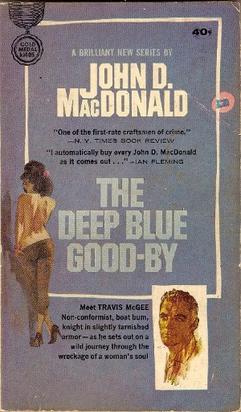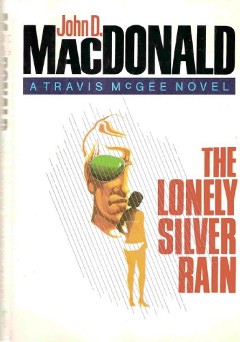As most of you know, author Robert B. Parker passed away in 2010. Parker was a prolific writer, turning out some 68 novels in two different genres--three, I suppose, if you count Young Adult (Edenville Owls). But the crime novel was his forte, and three of his four "series" were in the mystery genre. The protagonists of two of those three series--Spenser and Jesse Stone--successfully made the transition to TV, and the first installation of his Virgil Cole/Everett Hitch Western series was adapted into the critically-acclaimed feature film Appaloosa. (Parker's third mystery series featured female P.I. Sunny Randall and included half a dozen novels, none of which has yet been adapted to either the big or small screen.)
The purpose of this column, though, is not to discuss Parker's work. At least not specifically. What I'd like to talk about today are three recent efforts to extend his work, and to keep alive most of the beloved-by-millions Parker characters.
To this date, three authors have been given permission to continue writing novels based on Parker's characters and settings: Ace Atkins for the Spenser series, Michael Brandman for Jesse Stone, and Robert Knott for Cole/Hitch. It would appear they are all well qualified for such a task. Atkins is a journalist and bestselling mystery/suspense author, Brandman co-wrote and co-produced (with Tom
Selleck) the Jesse Stone TV episodes, and Knott co-wrote and co-produced (with Ed Harris) Appaloosa. Since Parker's death, there have so far been four Parker-inspired novels published by the new authors, the first three of which were Lullaby (Atkins), Killing the Blues (Brandman), and Ironhorse (Knott).
Selleck) the Jesse Stone TV episodes, and Knott co-wrote and co-produced (with Ed Harris) Appaloosa. Since Parker's death, there have so far been four Parker-inspired novels published by the new authors, the first three of which were Lullaby (Atkins), Killing the Blues (Brandman), and Ironhorse (Knott).
I, for one, was thrilled to learn that these wonderful characters had been granted a new lease on life. The question, of course, is Are the new novels any good? Well, I just finished Ironhorse last night, so I've now read all of those first three--and here are my humble opinions on each.
Lullaby
In this novel Spenser winds up helping a kid, which has worked well in the past--and it works here too. I won't dwell further on the plot; let me just say that Ace Atkins did what I thought was a great job with Parker's writing style. The almost-entirely-dialogue scenes, the spare and simple language, the action sequences, the fast-paced narration--all of this was well done. Spenser's strange relationship with Hawk rang true, his personal code of honor came into play on several occasions, and even though Susan Silverman was featured, she was--thank God--less nauseating than usual. This was a darn good book. I remember reading someplace that Atkins doesn't sound like someone copying Parker; he sounds like Parker.
While this one didn't impress me quite as much as Lullaby did, I enjoyed it nonetheless. The only things I found a bit jarring were that (1) it was a little more violent than most of the Stone novels, (2) it involved a lot less "thinking" on Jesse's part (which is one of the things he's really good at), and (3) Jesse didn't seem to carry around quite as much emotional baggage as he usually does. Jesse's faults--his brooding over his now-distant ex-wife, his drinking problem, etc.--aren't something I particularly like, but they do help make him what he is. Even so--as I said--I found the novel interesting and entertaining, and Brandman writes a smooth story. I will happily buy the next one in the series when it comes along.
I really liked this novel. I'm a sucker for Westerns anyway--I'd probably write more Western stories than mysteries if there were a market for them--and I thought this one was intelligent, authentic, and great fun to read. The terse conversations between Marshal Cole and Deputy Hitch were done extremely well, and the settings were so real I felt I was riding beside them, both on the trail and along the railroad tracks that run throughout this tale. The action scenes were understated but effective, and the keynote of the novel was--as in the others--the rock-solid friendship between the two leads. A good effort, I thought.
Question for you mystery (and Western) fans: are any of you Parker fans as well? Have you read any or all of these "additional" books? If so, did you enjoy them?
NOTE: While researching this column, I learned that the second of Michael Brandman's Jesse Stone novels, Fool Me Twice, is now available--and I understand the second of Ace Atkins's Spenser novels, Wonderland, will be out in May. I look forward to reading both.
I still remember how sad I felt when I first heard about Parker's death, almost exactly three years ago. Part of that was purely selfish, since I figured his creations had died with him. Nobody's happier than I am that his characters are still around.
I still remember how sad I felt when I first heard about Parker's death, almost exactly three years ago. Part of that was purely selfish, since I figured his creations had died with him. Nobody's happier than I am that his characters are still around.
I cannot, however, say that I envy any of the three authors who've agreed to carry on. Bob Parker left some big shoes to fill.
BY THE WAY . . . Here are the answers to my Mystery Trivia quiz, posted two weeks ago:
1. What was the full name of Sherlock Holmes's landlady?
Mrs. Martha Hudson
2. In what magazine did Dashiell Hammett's first Continental Op story appear?
Black Mask
3. What was Evan Hunter's best-known pseudonym?
Ed McBain
4. Who killed Richard Kimble's wife in TV's The Fugitive?
The one-armed man
5. What's the name of Bill Pronzini's famous detective?
The Nameless Detective (Okay, it was a trick question.)
6. Who played the gangster who carved up Jack Nicholson's nose in Chinatown?
Roman Polanski (a cameo by the director)
7. What fictional series character hitchhikes across America carrying only a toothbrush, an ATM card, and the clothes on his back?
Jack Reacher
8. Where did Nick and Nora Charles stay when they were in New York?
The Normandie Hotel
9. What mystery (and former Western) author wrote the novel Hombre and the short story "3:10 to Yuma"?
Elmore Leonard
10. What Poe story is considered to be the first "locked-room mystery"?
The Murders in the Rue Morgue
11. What was taken in John Godey's novel The Taking of Pelham One Two Three?
A New York subway train
12. Who played a judge in the final episode of Perry Mason, telecast in 1966?
Erle Stanley Gardner
13. In what city was Spenser based?
Boston
14. How do you pronounce Ngaio Marsh's first name?
Ny-O (rhymes with Ohio)
15. In North by Northwest, what is Cary Grant's reply when Eva Marie Saint says, "Roger O. Thornhill. What does the O stand for?"
"Nothing."
16. Who shot J.R., on TV's Dallas?
Kristin Shepard (Sue Ellen Ewing's sister, played by Mary Crosby)
17. What was the basis of many of the titles of Martha Grimes's detective novels?
They were names of English pubs
18. What was Mike Hammer's secretary's name?
Velda
19. What did Bullitt, Vertigo, The Maltese Falcon, and Dirty Harry have in common?
San Francisco
20. Who lived on a houseboat called The Busted Flush?
Travis McGee
21. Edgar Box is the pseudonym of what writer?
Gore Vidal
22. Who always includes a number in the titles of her mystery novels?
Janet Evanovich
23. Who played the murderer in Rear Window?
Raymond Burr
24. In Christie's The Murder of Roger Ackroyd--how did he die?
He was stabbed in the back
25. How did Nero Wolfe finish the following line: The only safe secrets are . . .
. . . those you have yourself forgotten
26. What TV character's name was taken from the British film industry expression "man-appeal" or "M-appeal" (which is what the series producers were looking for)?
Emma Peel
27. What was Robert B. Parker's middle name?
Brown
28. What was Dick Francis's only collection of short stories?
Field of Thirteen
29. Who was the voice of Charlie in TV's Charlie's Angels?
John Forsythe
30. How did Hitchcock manage to do his trademark cameo in the cramped setting of the movie Lifeboat?
He appeared in an ad for a fictional weight-loss drug, shown in a newspaper aboard the lifeboat
31. What's the name of the bog that borders the Baskerville estate?
Grimpen Mire
32. In Richard Diamond, Private Detective, who played Sam (RD's answering service)?
Mary Tyler Moore
33. What mystery writer is actually Dr. Robert William Arthur?
Robin Cook
(This was my mistake. The real name is Dr. Robert William Arthur Cook. Nice way to keep you from guessing the correct answer, right?)
(This was my mistake. The real name is Dr. Robert William Arthur Cook. Nice way to keep you from guessing the correct answer, right?)
34. In which of the Thin Man movies did James Stewart play a suspect?
After the Thin Man
35. Who had to turn down the role of Indiana Jones because he was tied up filming a P.I. series?
Tom Selleck
36. What's unique about the settings of Nevada Barr's mystery novels?
They're all set in National Parks
37. In The Maltese Falcon, what was Sam Spade's partner's name?
Miles Archer
38. Who were the two cousins who used the pen name Ellery Queen?
Frederick Dannay and Manfred B. Lee
39. What Ben Gazzara/Chuck Connors TV series had the following format: the first half was spent catching the crook and the last half was spent convicting him?
Arrest and Trial
40. What do P.D. James's first two initials stand for?
Phyllis Dorothy
41. Who writes mystery novels starring sports agent Myron Bolitar?
Harlan Coben
42. Who was the producer's first choice to play Lt. Columbo?
Bing Crosby
43. The movie Heavenly Creatures was based on a crime actually committed by what popular mystery writer, when she was in her teens?
Anne Perry
44. What musical instrument did Sherlock Holmes play?
The violin
45. What TV private detective frequented a bar called Mother's?
Peter Gunn
46. What was used to simulate blood in the Psycho shower scene?
Hershey's chocolate syrup
47. What do Robert B. Parker's Jesse Stone series and Steve Hamilton's Alex McKnight series have in common?
The Stone series is set in Paradise, Massachusetts; the McKnight series is set in Paradise, Michigan
48. What did the dying man tell James Stewart in The Man Who Knew Too Much?
That someone would be assassinated
49. What is romance author Nora Roberts's mystery-writer pseudonym?
J.D. Robb
50. Which Agatha Christie novel featured Alice Ascher, Betty Barnard, and Carmichael Clarke?
The ABC Murders




























